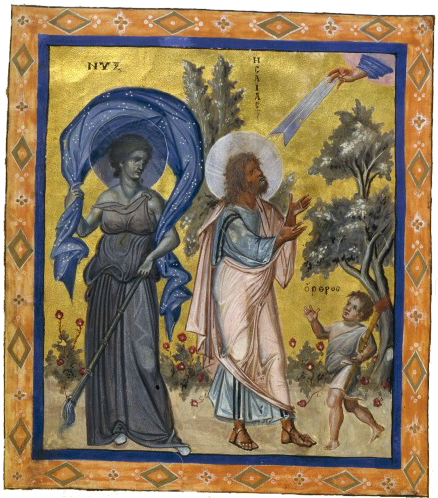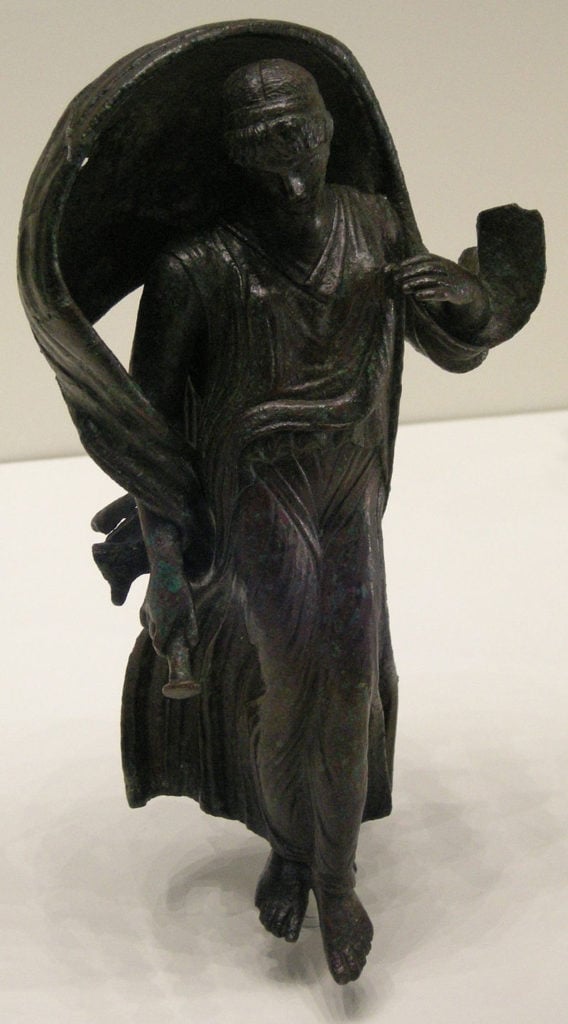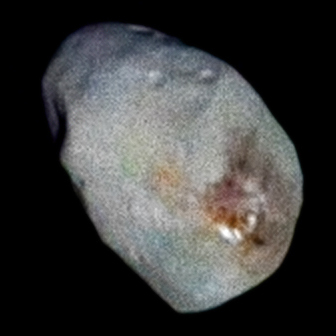Nyx is the ancient Greek goddess who represents night. Unlike her sister, Eos, the goddess of the Dawn, who appears often throughout Greek mythology and later Western literary works, Nyx is a mysterious, shadowy figure, often portrayed under an enveloping dark cloak.
Thought to have been present at the beginning of creation, she gave birth to fearsome beings such as Hypnos (Sleep) and Thanatos (Death), with Erebus (Darkness) himself.
Her appearances are very few and far between in surviving ancient Greek myths, but the stories that are extant reveal her as a figure of such exceptional power and beauty that she was even feared by Zeus himself, the greatest of the gods, according to Hesiod.
Nyx rarely appears in Greek mythology but is feared by all
In Hesiod’s great work “Theogony,” Nyx is born from Chaos. Nyx later gives birth to Aether (Brightness) and Hemera (Day) after her union with Erebus. Later, from her own body, Nyx gives birth to Moros (Doom, Destiny), the Keres (Destruction, Death), and Thanatos himself (Death).
The goddess of the night also spawned Hypnos (Sleep), the Oneiroi (Dreams), Momus (Blame), Oizys (Pain, Distress), the Hesperides, the Moirai (Fates), Nemesis (Indignation, Retribution), Apate (Deceit), Geras (Old Age), and Eris (Strife).
Nyx also bore one of the most frightening figures of all Greek mythology, Charon, the ferryman of Hades, who transported the dead over the river Styx to their final abode.
Strangely enough, however, Nyx also gave spontaneous birth to Philotes (Friendship) — perhaps as a way for the ancient Greeks to intimate that friendship can be a two-way street, with painful betrayal the other side of its coin.
Hesiod designates Tartarus as the home of Nyx; her offspring Hypnos and Thanatos also live there. The author also posits that Nyx’s daughter Hemera (Day) left Tartarus just as Nyx (Night) entered it; continuing the cycle, when Hemera returned, Nyx accordingly left.
This interestingly mirrors the portrayal of Ratri (night) in the Rigveda of India, in which she works in close cooperation — but also tension with her sister Ushas (Dawn), who is represented as Eos in Greek mythology.
In Homer’s Iliad, from 14.249–61, Hypnos, the minor deity of sleep, reminds Hera of an old favor after she asks him to put Zeus to sleep. He had once before put Zeus to sleep at the bidding of Hera, allowing her to cause Heracles (who was returning by sea from Laomedon’s Troy) great misfortune.
Zeus was furious and would have driven Hypnos into the sea if he had not fled to Nyx — his mother — in fear. Homer goes on to say that Zeus, fearing to anger Nyx, held his fury at bay and in this way Hypnos escaped the wrath of Zeus by appealing to his powerful mother.
He disturbed Zeus only a few times after that, always fearing Zeus and running back to his mother, Nyx, who would have confronted Zeus with a maternal fury.

Nyx took on an even more important role in several fragmentary poems attributed to Orpheus. In these, Nyx, rather than Chaos, is the first principle being from which all creation emerges.
Nyx occupies a cave or adyton, from which she issues oracles. Cronus, who is chained within, asleep and drunk on honey wine, dreams and prophesies. Outside the cave, Adrasteia clashes cymbals and beats upon her tympanon, moving the entire universe in an ecstatic dance to the rhythm of Nyx’s chanting.
Phanes, the strange, monstrous, hermaphrodite Orphic demiurge, according to some sources, was the child, or father, of Nyx. The Greek goddess of the night is also the first principal voice in the opening chorus of Aristophanes’ The Birds, which may be Orphic in inspiration. Here, she is also the mother of Eros, the god of love.
The theme of Nyx’s cave, or mansion, beyond the ocean (as in Hesiod) or somewhere at the edge of the cosmos (as in later Orphism) may be echoed in the philosophical poem of Parmenides, according to scholars.
The classical scholar Walter Burkert has speculated that the house of the goddess to which the philosopher is transported is the palace of Nyx; this hypothesis has yet to be proven, however.

Goddess of the Night worshiped in context of other cults
In some accounts, the goddess of witchcraft, Hecate, was also called the daughter of Night, along with Nyx. This depiction stems from the Orphic hymns.
Strangely, much like her sister deity Eos, the goddess of the dawn, there are no known temples dedicated to Nyx in Greece (although the Roman poet Ovid mentioned that there may have been at least two temples dedicated to Eos in antiquity, none have survived into recorded time).
However, statues are known to have been created to represent the ancient Greek goddess of the night, and several cult practices of her are mentioned by authors. According to the Greek historian and writer Pausanias, who lived in the second century AD, she had an oracle on the acropolis at Megara.
Pausanias writes: “When you have ascended the citadel (of Megara), which even at the present day is called Karia (Caria) from Kar (Car), son of Phoroneus, you see a temple of Dionysos Nyktelios (Nyctelius, Nocturnal), a sanctuary built to Aphrodite Epistrophia (She who turns men to love), an oracle called that of Nyx (Night) and a temple of Zeus Konios (Cronius, Dusty) without a roof.”

More often, Nyx was worshipped in the background of other cults; for example, there was a statue called Night in the Temple of Artemis at Ephesus. The Spartans even had a cult devoted to Sleep and Death, conceived of as twins.
Cult titles composed of compounds of the root word ‘nyx-‘ were attached to several deities, most notably Dionysus Nyktelios “nocturnal” and Aphrodite Philopannyx “who loves the whole night” (from the Orphic Hymn).
Roman authors mentioned cult practices and wrote hymns in her honor. Ovid wrote in his work “Fasti”: “May 9, Lemuria Nefastus. Your ancient rite will be performed, Nox Lemuria; here will be offerings to the mute dead.”
Nyx was also mentioned by Roman poet Publius Papinius Statius, who lived from c. 45 to c. 96 AD, in his work “Thebaid.”
O Nox…Ever shall this house throughout the circling periods of the year hold thee high in honor and in worship; black bulls of chosen beauty shall pay thee sacrifice (black animals were sacrificed to the chthonic gods), O goddess! And Vulcanus’ (Hephaistos’) fire shall eat the lustral entrails, where-o’er the new milk streams.
Name of Nyx inscribed permanently into astronomical nomenclature
In 1997, the International Astronomical Union approved the name Nyx for a mons (mountain/peak) feature on the planet Venus. Nyx Mons is located at latitude 30° North and longitude 48.5° East on the Venusian surface. Its diameter is 875 km.
On June 21, 2006, the International Astronomical Union renamed one of Pluto’s recently discovered moons (S/2005 P 2) Nix, in honor of Nyx. The name was spelled with an “i” instead of a “y” to avoid conflict with the asteroid already called “3908 Nyx.”
These two designations mean that the name of the mysterious, and feared, Greek goddess of the night will remain inscribed forever on all the astronomical charts of the world.



